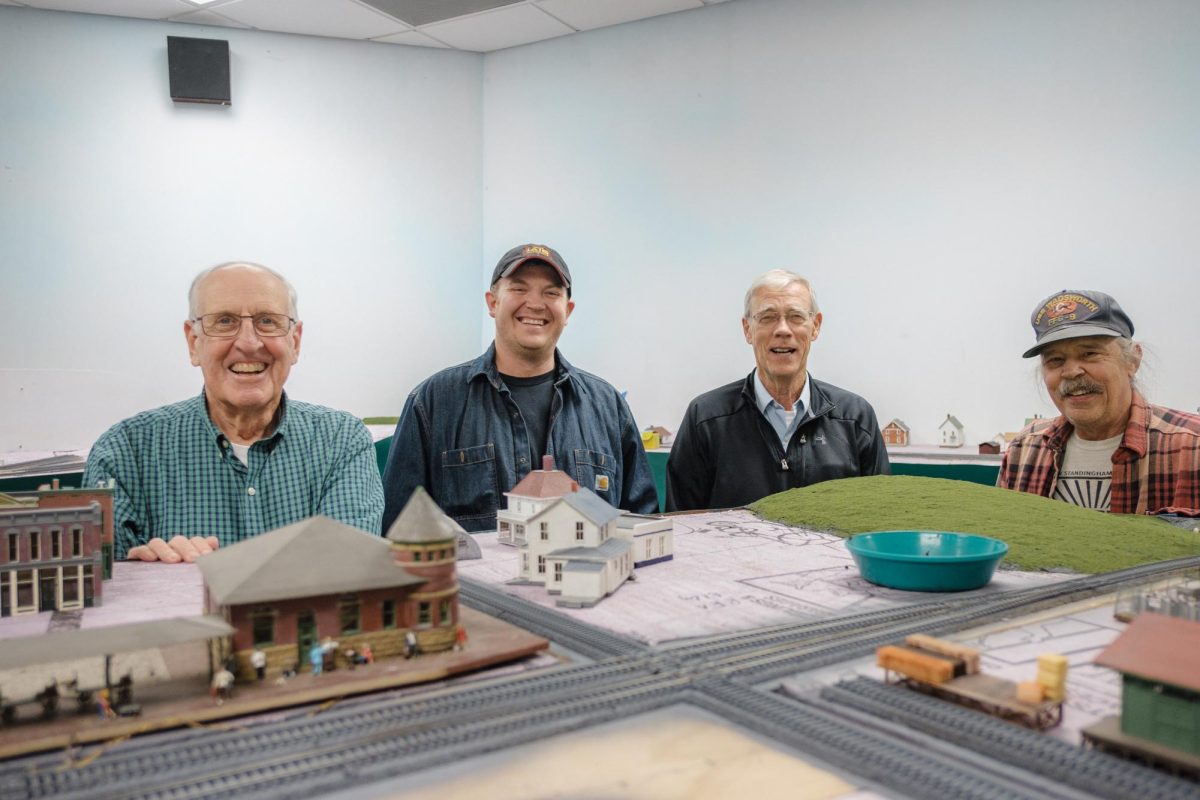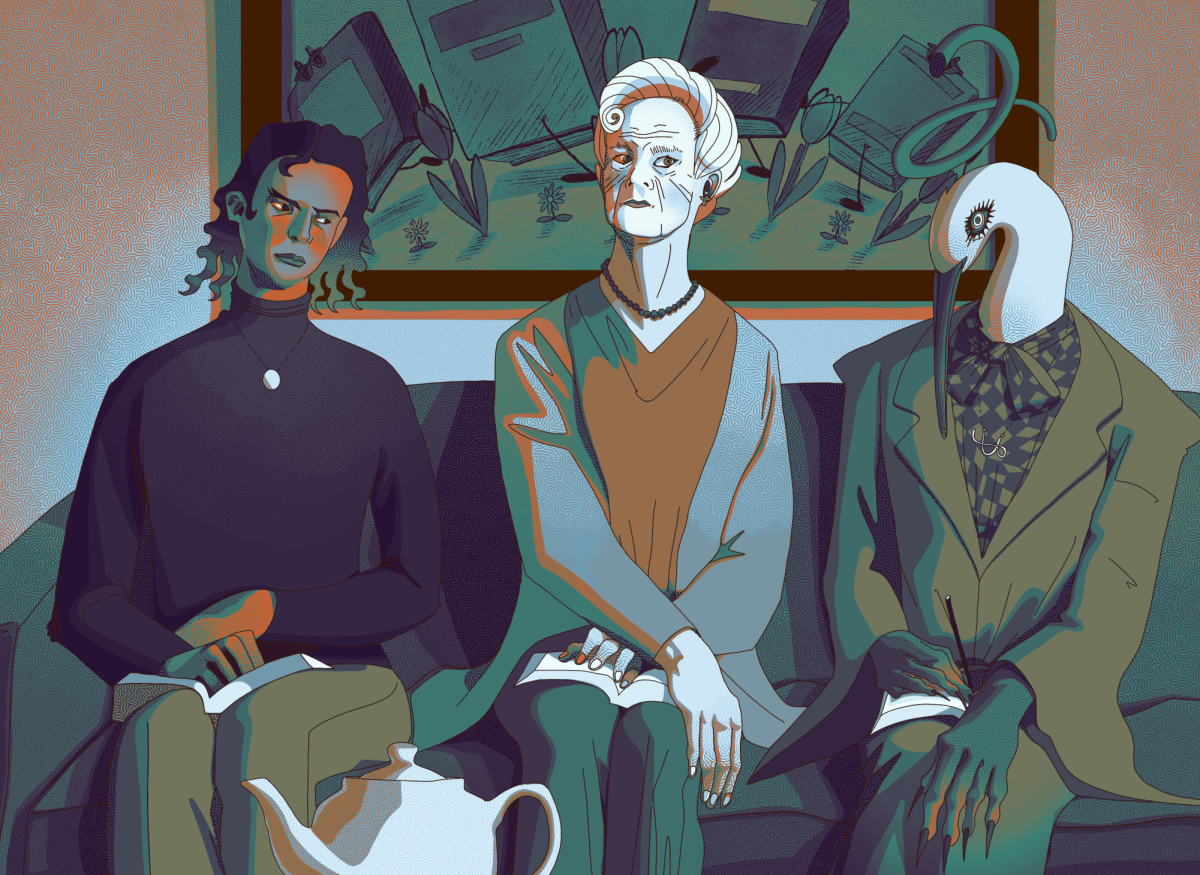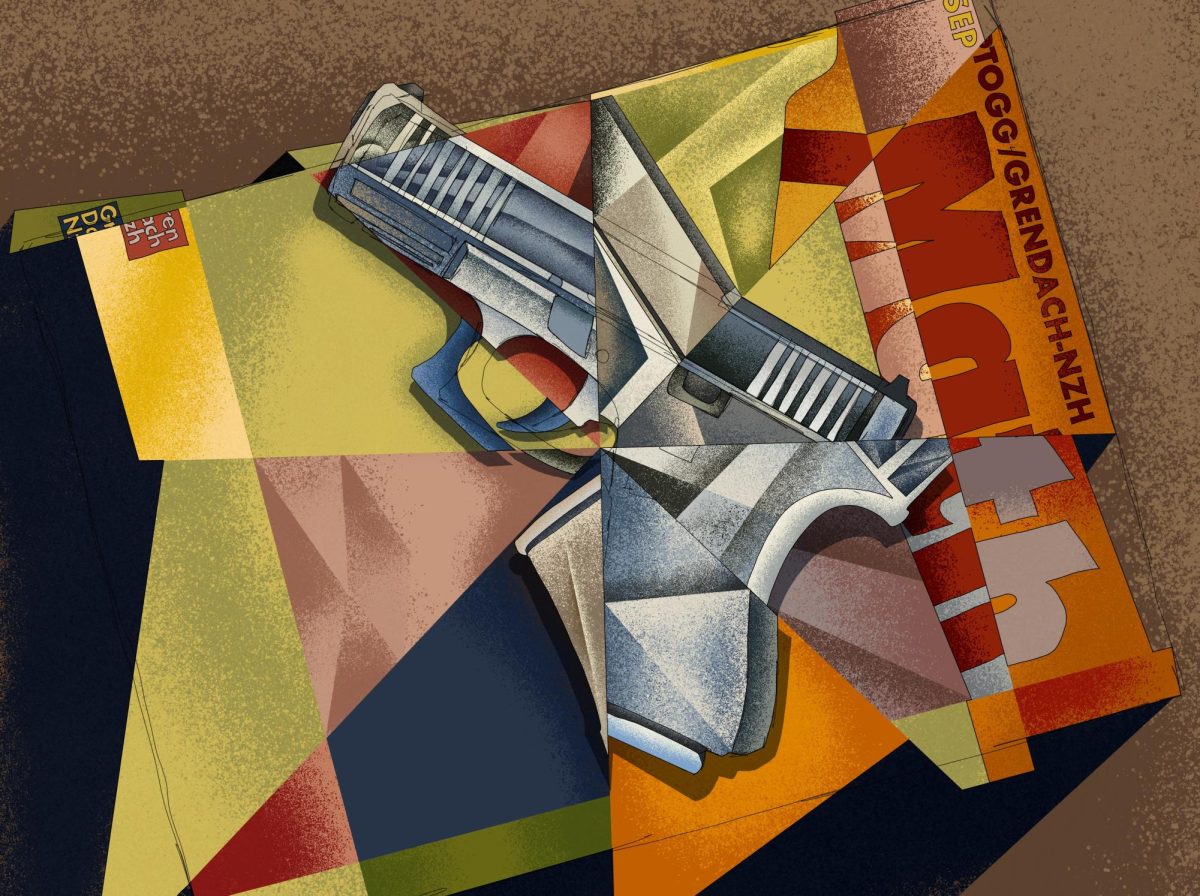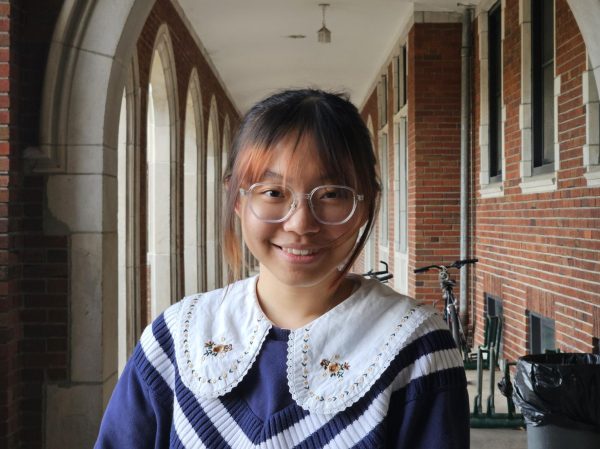At the intersection of Grinnell’s two main railway lines on 1014 3rd Ave., just opposite the historic Union Depot, stands a small, red-brick building blending into the embrace of surrounding trees and shrubbery. The building, which used to be the local branch of the now-defunct national Railway Express Agency, is now the base of operations for the five men who form the Grinnell Railway Express Model Club.
Armed with wires, turf grass powder and commercial model kits, the men fervently work on their passion project – a 1950s model of the diesel railway system that once served Grinnell and surrounding towns.
A large sign on the building’s front announces that the club was established in 2002. According to club treasurer Michael Thorndike and engineer Robin Broders, its founders were two residents of The Mayflower Community, Grinnell’s assisted living facility and the building’s owners. Part of the original lineup, Thorndike and Broders helped build the club’s first model railroad. The club thrived over the years, with new additions such as their social media coordinator, Chris Walters, and once, even a Grinnell College student.
However, the current lineup consists of just Thorndike, Broders, Walters and two others who joined this year: Dave Benson and club president Jed Peterson. Thorndike explained that decreased membership came with COVID-19. As older members passed on, no new ones took their place, and local interest in railway modeling declined as club gatherings were prohibited. To revitalize interest in Grinnell’s rich railway history, members unanimously decided to demolish the original model the first members built and replace it with an improved version.
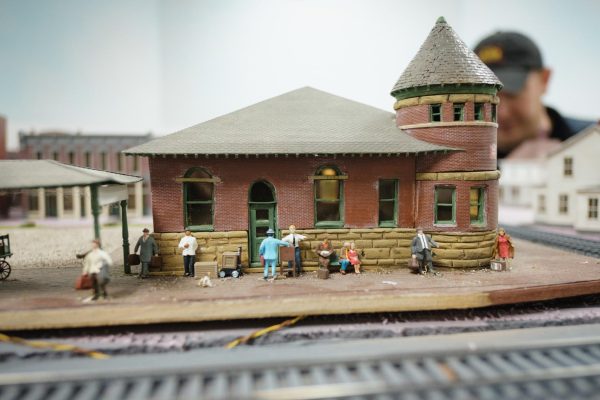
Plans for the new track were drawn up by Peterson – “a tribute to the golden age of rail travel,” as Walters put it. The club aims to incorporate modern technology to make the model more interactive and representative of the flourishing transport system and industry present in 1950s Grinnell.
The model scale, which once utilized a hybrid ratio scale of 1:87 and 1:48 (called HO- and O-scale respectively), has been standardized and the structure raised to a uniform level. The trains now run on Digital Control Command, where the movement of each train and additional features like light and sound can be controlled independently with a mobile application called WiThrottle – an upgrade from the older Direct Current models, where trains could only move together. The new model will also cover more of the routes taken by the two main lines that ran through Grinnell – The Chicago, Rock Island and Pacific Railroad and the Minneapolis and St. Louis Railway.
The club aims to complete the model by spring 2024. Although their formal meetings are on Fridays, members often come down in their free time to work on the track. Yet, they acknowledge that model building is a time-consuming process. Walters, to ensure the iconic Union Depot building was historically accurate, pored over old photos to single-handedly scratch-build the rotunda as it would have looked in the 1950s.
While most of the physical set-up is done, the hardest installations have yet to be completed – laying and wiring the track.
According to Broders, precision is essential to avoid what he considers “the two biggest problems” of model railroading – electrical problems and trains derailing. The task is further complicated by their plans to program a schedule where model trains stop to “pick up” and “drop off” cargo from a range of industries, as the real ones did before. Additionally, what they can install depends wholly on the funds they can access, which are mostly goodwill donations and membership dues. According to Broders and Peterson, they are not a very stable source of funds, especially when model locomotives cost several hundred dollars apiece.
Operating within these constraints, the club has had to get resourceful. Buildings are assembled from commercial model kits (one of the houses by the track is a replica of former President Eisenhower’s house) and several areas of Grinnell were excluded to accommodate more of the train lines. Props and even the wooden supports of the new model were simply reused from the old one. Thorndike and Broders pilfered small sticks from cut bushes in the neighborhood, drying, cutting and gluing them together to create miniature deciduous trees to spruce up the landscapes.
In past winters, the club would host a special winter exhibition of a Polar Express model. This year, however, Peterson hopes to do something different with their work-in-progress – an open house, to give the public a behind-the-scenes of how model railroads come together.
“You’ve got woodworking and putting bench work together, laying the track, the wiring, the model buildings,” said Thorndike. “The fascinating thing about this hobby is it’s multidimensional.”
According to Walters, the men have 100 years of railway modeling experience combined. What initially started as a childhood interest in trains –– real and replica –– has blossomed into lifelong passions for them all. Walters said the diesel and steam trains of days bygone simply have an “unimaginable charm” that never fails to draw him in.
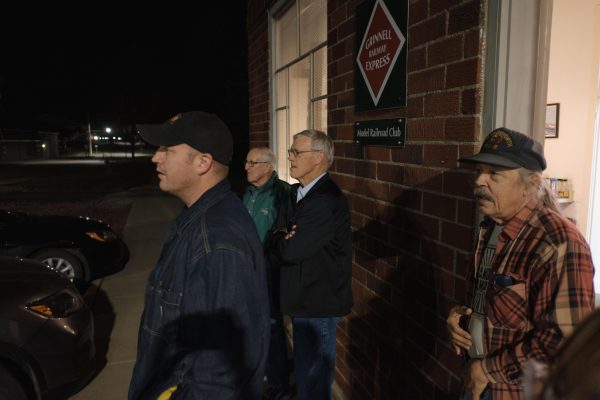
Looking up into the open sky as the train rumbles on, watching puffs of smoke billowing and swirling overhead, “you just feel like anything’s possible,” he said. “And that’s what this represents, that anything is possible.”
The club strongly welcomes anyone interested in trains and model railroading to their meetings. They have never charged dues for any College student who wishes to become an official member.




























































